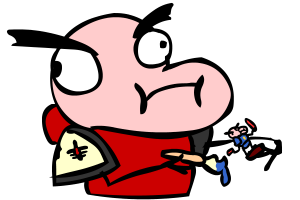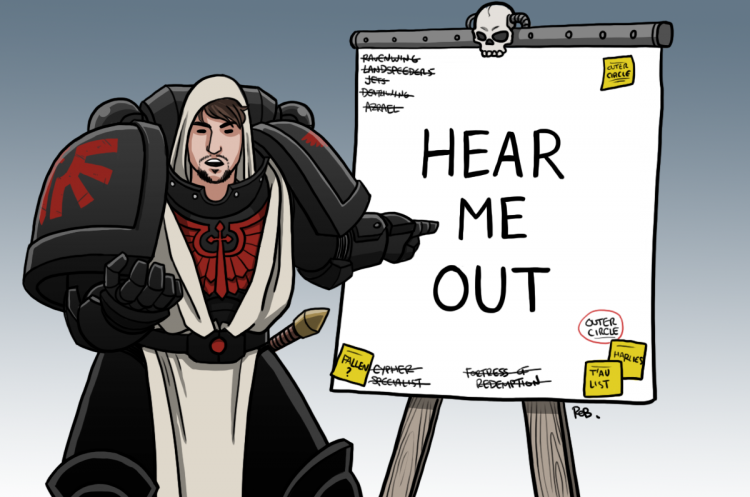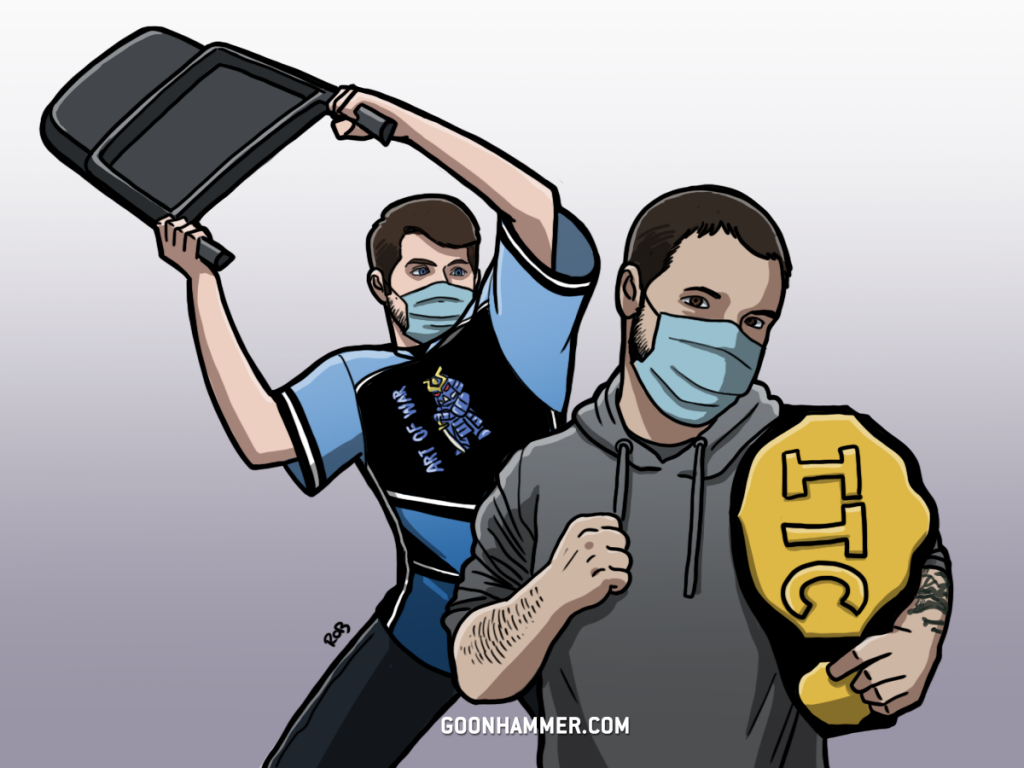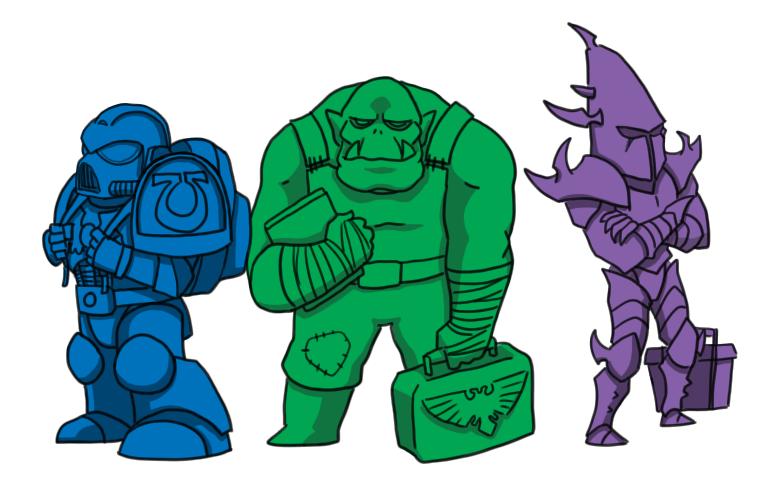Welcome back to our three-part series on player psychographics in Wargaming. In our first installment, we talked about the problem with the casual/competitive framework of segmenting players and the concept of Psychographics and how they apply to games. To do this, we looked at the most famous example of player psychographics – the Timmy, Johnny, and Spike psychographics from Magic (along with the extra two, Mel and Vorthos). If you missed that article, you can find it here.
This time around, I’m going to talk about translating those psychographics to wargames. Primarily Warhammer, but we’ll generalize things a bit as I don’t think Warhammer is necessarily unique when it comes to player motivations.
For the most part, I think Magic hit the nail on the head when it came to the three primary motivations for players. Specifically:
- Timmy/Tammy – plays the game to experience something.
- Johnny/Jenny – plays the game to express something.
- Spike – plays the game to prove something.
It won’t take a lot of work to translate these to wargames. It’s not all going to be 1:1 – there are some similarities between list building and deck building, but they’re also very different in terms of the amount of flexibility you have and also the presence of factions in wargames. There’s also a financial and time element to wargames which doesn’t really exist in Magic – building a new army or team takes a lot more time and energy than building a new deck for Magic, and you can’t sell and trade models like you can with cards to get what you need. This means that armies are much more personal to wargamers and changing or building a new army the night before an event may just not be possible.
With that in mind, let’s dig back into the archetypes, and look at how we might adjust them for wargames. We’re also going to rename them, and give them gender-neutral names. I’m also going to introduce a new player motivation/type to replace Mel. Yesterday I had “a bunch” (read: five or six) people come out of the woodwork to tell me that actually they’re a Mel and they play Warhammer and that’s cool. But it’s still not a particularly useful framework to consider for wargames, where you aren’t creating thousands of cards per year and the need to create rules that appeal to that group is pretty low.

Timmy/Tammy -> Dylan
Dylan plays the game to experience something. They enjoy the feeling they get when they play, rolling dice and having big moments in a game. While Innes (more on them below) hates the randomness of vehicles exploding or fluke odds of chaining a bunch of 6s together to completely eviscerate a unit, Dylan loves it – even if it’s their own vehicle exploding and taking them out. Dylan wants to play big, splashy units and heroes, and if they buy a unit and paint it, it’s going on the table next game. Dylan wants to create cool moments, play armies and units that make them happy, and hang out with friends. On the more narrative side of things, Dylan wants to tell a story, making things up as they go for a narrative that will persist after the game.
We’ve chosen the name Dylan here both because it’s gender-neutral but also because it’s a great fit for Goonhammer author Dylan Gould, known for the insane amount of work he puts into his Necromunda terrain and preference for narrative play experiences. As with Timmy/Tammy, there are subgroups within the Dylan category, and many of the same groups apply here:
- Power Gamers in the context of Wargames are the players who love playing big models. They’d bring a titan to every game if they could. They also enjoy the thrill of dominating the game, and so are likely to be the first players upset that titans “don’t feel very powerful” on the table (curse you, principles of balanced design!). They’re also more likely to equate power with fun, and enjoy the thrill of dominating a game – they don’t want close wins, they want to smash opponents.
- Social gamers are the “beer and pretzels” crew, who may see the game more as an excuse to hang out than their main focus. To these players it’s all about spending a Saturday afternoon rolling dice and eating pizza, and these players are more likely to play 2v2 or 3v3 games which can involve everybody in the group. These players are also the most likely to try and enforce some kind of play standards, house rules, or social norms when it comes to building lists and playing the game.
- Adrenalin gamers are very much a part of wargames. As with Magic, they’re all about the spectacle and chaos. They want big explosions and wacky effects. They’ll charge something just because it would be cool to do. They want every vehicle to explode on death – even their own. There are a lot of Ork, Gloomspite Gitz, and Goblin team players in this group.

Johnny/Jenny -> Chase
Chase plays the game to express something, typically through list building and play. For these players, their list and army are an extension of themselves, and so they want it to be unique, so they can show the world how clever/creative they are. They rarely netlist and often switch to bad or off-meta factions just to avoid the possibility of fielding something which could be mistaken for a netlist. Players in this group can have as much or more fun building lists as they do playing the game, coming up with new concepts and possibilities, bouncing ideas off other players. There isn’t quite as much room for expression in listbuilding as deckbuilding – you just have fewer pieces to work with, even in factions like space marines with a hundred datasheets – and locking into factions typically limits things further, but these players can instead focus on overlooked units and strategies.
That said, there are also some very clear areas in wargames players express themselves aesthetically which just don’t exist in Magic – painting and conversions are the big ones, but it’s also pretty common to see players have an entire narrative they’ve built an army around – from the units they’ve chosen to how they’ve converted and painted them to entire “counts-as” armies (though these can also just as easily fall into the Spike category, depending on what they’re representing).
We’ve named this group after Goonhammer author Chase Garber, known for the “Hear Me Out” series and the way he will reliably change to a different faction whenever the army he is playing becomes top-tier, as he’s more interested in proving you can make a bad faction work than winning with a good faction. Similarly, there are subgroups here:
- Off-meta Builders are players who want to build lists using units and factions no one else is playing, taking crazy combinations with the intent to show they can work. These players want to prove they can master the game and its systems by finding hidden gems and proving everyone else wrong.
- Combo Players are a bit different in this context. I see them as players who like to refine a strategy around specific rules and combos, stacking abilities to create interesting snowball effects. These aren’t possible in every wargame, and they often have multiple points of failure, but when they go off it’s something to see.
- Lorebound are players who like building armies within very specific lore constraints. The all-bikes White Scars army, the Ork Speed Freeks army, the people playing pure Haemonculus Covens – these builders want their armies to reflect the lore in specific ways, and build within that framework.

Spike -> Innes/Ines
Innes plays the game to prove something – primarily mastery over the game and its concepts. They see the game as a challenge to be solved, and solving it as being a way to demonstrate their abilities. They’re out there to win because doing so is how they can prove it – but not all wins are created equal. Innes wants a challenge, they want to win tough, close games against stiff competition – they relish the chance to play other good players in high-stakes environments. They tend to play more games, and when they play they’re interested in honing their skills and improving. On the competitive side of things, Innes wants to win tournaments and awards. On the casual end, they want to beat their friends and flex their strategic muscles.
Innes’ play identity isn’t so tied to a specific army and they will change things up to play the most competitive factions – though it’s worth noting that the economics and time investments of wargaming make this much, much more difficult than in Magic. As a result, you’ll often see Innes either borrow models or switch between a smaller set of armies they already own to whichever is the most competitive, rather than completely shifting as needed.
We’ve named this player group Innes after Stat Check host and occasional Goonhammer guest author Innes Wilson, a top competitive player who goes hard all the time, even when he’s participating in Blunderdome. As with the other two groups, we can create some subgroups here and many of them map to Magic’s categories.
- Innovators are similar to Chases in that they want to build unique lists and blaze the trails on which other players will follow. They’re constantly trying new builds and looking at ways to skew things to break the game wide open. When your favorite unit gets nerfed in a balance patch because people were taking three of them, Innovators are why.
- Netlisters aren’t interested in innovating – they’re happy to copy what works, especially if what works wins. They may make some tweaks here and there based on how they feel about a unit or what they have in their collection, but they’d rather spend time getting in reps with the best list than trying out a new one.
- Analysts look for ways to game the system, building for top builds and lists they expect to see (and sometimes even specific players). They’ll build for an event’s specific terrain layouts and rulings and will fine tune their builds as necessary. These are the players staying up the night before days 2 and 3 of the event looking at matchups and planning for who they might play next.
- Best in Faction want to prove their skill, but they’re also strongly tied to a specific faction. Maybe it’s because they like the lore, or they’ve invested too much time and money into that faction. Either way, their primary interest is proving they’re the best with that particular faction. When their faction is good, they’ll be on the top of the leaderboards. When their faction struggles, they’re going to struggle.
In addition to these three categories, we can fashion our own additional characteristics/categories around player motivations which are more specific to wargames and have less to do with why people play and more with how they engage with the hobby aspects of the games. Unlike the above three groups, these profiles aren’t about player motivations but rather where players find value and aesthetic beauty in the game.

Mel -> McVey
We’re replacing Mel here with a group that’s much more unique and important to wargaming. These players appreciate the Hobby aspect of the hobby – the modeling, converting, and painting aspects of it. They love seeing and playing with painted minis and enjoy painting themselves. They derive aesthetic beauty in wargames from the miniatures and the art associated with them. Not all players in this group are great painters, but they all enjoy and appreciate painting and see it as an important part of the hobby. This category easily combines with the player motivation groups – an Innes/McVey is trying to win awards for Best Painted or Best Overall.
This group is named after the legendary co-founder of the ‘Eavy Metal team, Mike McVey.
Vorthos -> Malcador
These are the players who derive enjoyment from the game’s lore. From novels to fluff, they want to know more about the story of the game and the setting it takes place in. As Dylans they’re interested in narrative campaigns and how to tell stories of their own which fit into the larger canon. As Chases they try to build armies which fit within the constraints of the lore and the fluff. Innes may very well be a Malcador, but if they express it through play, it’s more likely to be through playing a narrow band of factions whose lore they enjoy, and working to be Best in Faction for that group.
This is a pretty solid setup for our wargaming player base – I think anyone reading this can both picture where they fit into these categories and also where players they know fit. But it’s also just theoretical at this point. The next step is to actually do some research on the players to see if we’ve missed the mark, if there are other player types we haven’t identified, and how the player base divides among these categories, i.e. is one category larger than the others.
Building a Survey to Understand Player Motivations
The Timmy/Johnny/Spike framework is just that – a framework for understanding player motivations and talking about the game. At the moment our updated wargames version is just theoretical, though I believe everyone will agree that the player motivations above exist and they’ve seen some, if not all of them, in play. The next step is testing some of this – seeing “how real” these groups are, how often these motivations come into play, and understanding what portion of the player base they represent.
One way we can do this is through a survey of players on their motivations. The big challenge here is figuring out how to get players to tell us these motivations – it’s not a great idea to just to ask someone “hey do you play Warhammer to express yourself?,” in part because that’s a weird question and in part because it’s very broad and vague – sure, we have an idea what it means but the person answering the survey may not, or may have a different idea than we do. Part of good survey design is figuring out how to translate the exact concepts you’re looking for into questions.
When you write a survey you typically want to create a rising and falling motion of question difficulty, i.e. start with some easy questions, ask some tough ones, then go back to easy questions. This usually means putting some demographic/about yourself questions at the start and some at the end. For our survey, we’re starting with a game. Specifically, we’ll ask our survey respondent to pick a single game they play and tell them that the rest of the survey will be about that game.
Intro Question
- Which of the following would you say is you primary game, i.e. the one you play most often? (if two choices are tied, pick the one you want to answer questions about) – Answers here include Warhammer but also Necromunda, Kill Team, and Marvel Crisis Protocol, plus an “other” box.
Next we want to understand where and how often those players play their primary game. Generally competitive play drives more games and in local environments, but we’ll also want to understand how different groups interact with each other and the community.
Play Habits
- In a given month, how many times do you play that game?
- How many of your games are played in each of the following settings? (at home/friend’s house, at a school/gaming club, at a local shop, at a convention/big event)
- When you aren’t playing games at home, how far do you typically have to travel to play your primary game?
- When playing your primary game, how often do you play each of the following types of player? (people in my friend group, locals I’ve played before, Locals I haven’t played, New players from other areas or regions)
- In the last year how many times did you attend or participate in each of the following for your primary game? (one-off/pick up game with a friend, one-off/pickup with a stranger, one-day tournament/RTT, multi-day tournament/GT/Major, narrative campaign/event, competitive league)
- Did you attend any of the following events in the last year? Check all that apply (Adepticon, GenCon, Comic-Con, GW Open, LVO, NOVA, PAX, Warhammer World Events)
Now to get into the meat of things. We have a set of questions here which are all based on a five-point Likert scale; we ask players to tell us how important each of the following things is on a scale of “Not important at all” to “Extremely important.” These are grouped into some broad categories, i.e. motivations, narrative, hobby, and play. Each one is intended to help understand what brings a player to the table and keeps them going, and each one aligns broadly with one of our Dylan/Chase/Innes/McVey/Malcador categories.
Gaming Motivations
- Playing with models I’ve recently purchased or painted
- Raising my profile in the wider community
- Creating interesting scenes or displays with my models
- Exercising my thinking and problem-solving abilities
- Using an army or team that is effective on the table
- Exercising my imagination to tell a story about the game
- Playing with a unique army or combination of models
- Seeing well painted armies on the table
- Playing with specific heroes, characters, or other large models
- Playing against new opponents or armies
- Playing the game as a reason for social interaction with friends
- Being familiar with the game’s lore or backstory
Narrative
- How the outcome of a game will affect the story of my next game
- Creating dramatic moments and heroic scenes in-game
- The story behind my army and why they’re taking the field
- Customizing the unit names and backstory for my army choices
- Playing custom or asymmetrical missions
- Building a list or army that is accurate to the game’s lore/backstory
Hobby
- Playing with a fully-painted army or team
- Having an army/team that is visually distinct from other armies/teams
- Winning hobby awards e.g. Best Painted
- Showing off painted models on social media
- Improving as a painter
- Creating interesting conversions
- Creating your own paint scheme for an army or team
- Learning new hobby skills and techniques
Playing the Game
- Demonstrating a mastery of the game’s rules
- Beating skilled opponents
- Mastering and innovating on strategic concepts
- Winning awards for play, e.g. Best General
- Selecting units or armies/teams which give me the best chance to win
- Using my favorite armies, units, or models in the game
- The opportunity to showcase my models to other players
- Both players’ armies are painted to a high standard
- Experimenting with new units or army lists
Then we wrap up with some demo questions. These are things we might want to look at later if we want to do some more detailed cataloging, but aren’t massively important to the survey.
Demographics
- Age
- Gender
- Relationship Status
- Annual Household Income
The whole thing is a five-minute survey which gives us a very detailed look at what motivates a player, with clear ties to each axis. We can put this into the field, collect some responses, and then look at the results and do some data science on them to better understand how people fall into these groups and where the dominant tendencies lie in the wargaming space.
Next Time: Understanding How People Break Into These Groups
We’ll save all of that analysis for the third and final article in this series. There’s a ton to talk about there, and in addition to talking about how these apply to different players in the wargaming space we’ll also look at the breakdowns of the audience – specifically, what percentage of respondents fall into each group, and what can we say about those groupings. Are the majority of players Dylans, Chases, or Inneses? And if they’re a mix, which mixes are the most common? Find out tomorrow when we finish the series off.
If you have any questions or comments feel free to drop us a note in the Comments below or email us at contact@goonhammer.com. And if you want regular updates in your inbox, subscribe to our newsletter.


